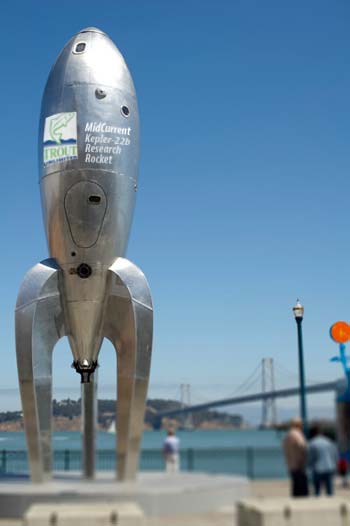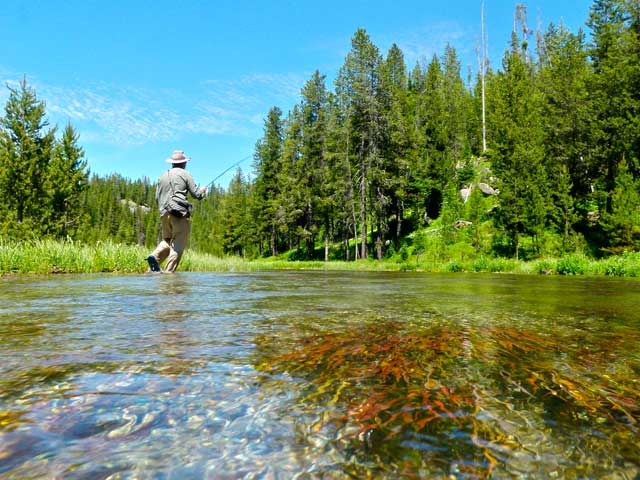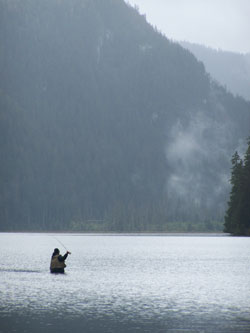Time to Get on Board!
Return to “Fly Fishing on Kepler-22b”
We want to be on that first ship as much as you do.

Tim Romano photo
But as much fun as it is to imagine what fly fishing might be like on a distant and presumably unsullied planet, and what the fishery might look like in a far-off water world, we still have vibrant fisheries right here on our planet waiting to be discovered and protected for the next generation of earth-bound anglers.
Given that 22 million miles (and 600 light years) is a long way to travel to experience something completely new, let alone make a plan for protecting it, why not get involved in the many efforts ongoing to safeguard trout, salmon and other earthly piscine critters? While it might take a well-rounded fisher to fully experience what lies beneath the vast oceans on Kepler-22b, here on earth, protecting what we have, and improving what we earthlings have managed to tarnish over the years, is simply part of what it takes to become the complete angler we all want to be.
With that in mind, let’s take a look at some of the best trout and salmon fisheries on our own planet and what we as anglers can do to protect them, restore them and sustain them so our kids and grandkids won’t have to take a rocket flight in order to experience fly fishing at its finest.
Bristol Bay, Alaska: Home to the world’s most important salmon fishery, this drainage is also home to some of the best fly fishing for monster rainbow trout, and all five species of Pacific salmon, as well as Dolly Varden, Arctic char and grayling. It’s also the proposed location for what would be the largest open-pit metals mine on earth. This unique landscape and the fish that charge up its rivers and streams every single year need help from every able-bodied fly fisher if this renowned fishery is to persist and a unique way of life is to be protected.

Chris Hunt photo
Marcellus shale country, Pennsylvania and New York: In what many might consider the breadbasket of American fly fishing, an ongoing natural gas play is already tarnishing some of the East’s most important wild and native trout fisheries. The petroleum industry is using surface water and injecting toxic chemicals into the ground to get at natural gas reserves beneath important water resources, and the potential for degradation is very real. Protecting these important watersheds is vital for native brook trout persistence and recovery, and for angling opportunity, today and for generations to come.

Chris Hunt photo
Yellowstone Lake, Wyoming: Years ago, invasive lake trout somehow found their way into one of the country’s most precious fisheries resources. Since the early 1990s, Yellowstone Lake has lost about 99 percent of its spawning Yellowstone cutthroat trout to the voracious and non-native lakers. Today, the National Park Service has a plan in place to remove lake trout and rebuild America’s signature native trout fishery, and it needs your help to make it happen. Netting operations will begin in earnest this summer, but biologists need equipment to monitor the lake trout population, determine important migration routes and find spawning areas. Then, commercial netters will have good data to use as they work to eradicate lake trout from Yellowstone Lake.
These are but a few of the efforts under way to protect and restore some of earth’s most important trout and salmon fisheries—there are many more afoot. Perhaps the best way to get your waders wet in the conservation arena is become a part of the solution and become a card-carrying member of Trout Unlimited. Membership has its benefits, not the least of which is helping a dedicated network of staff and volunteers save our own planet, one trout at a time.











